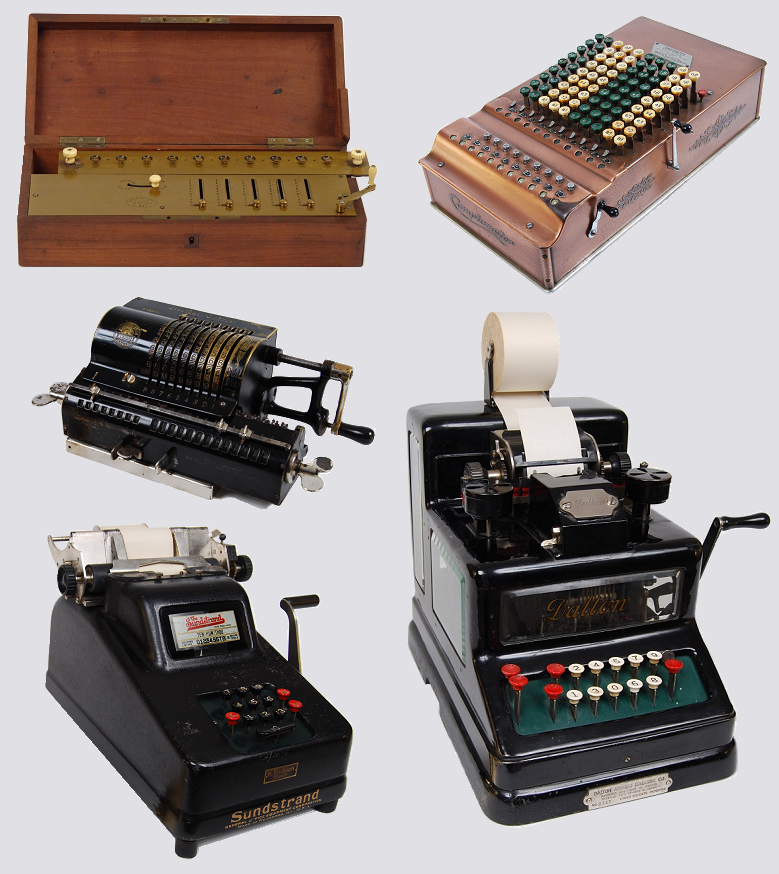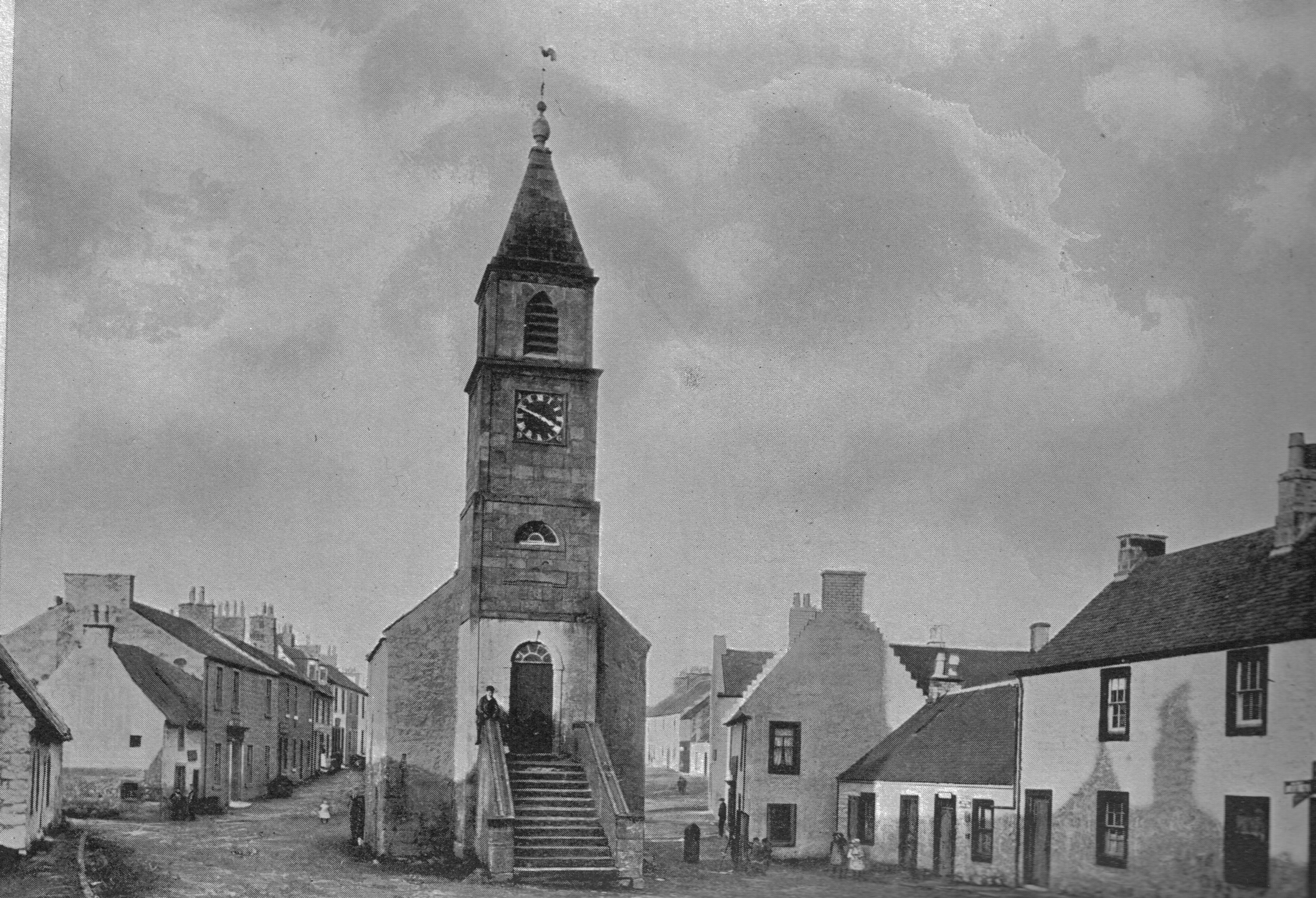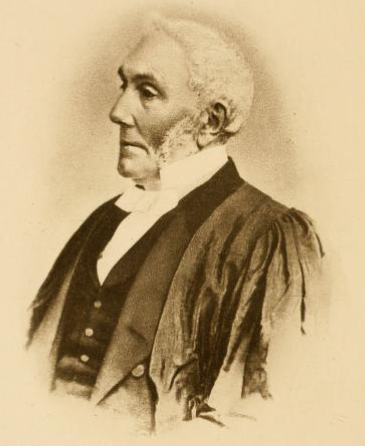|
George Brown (inventor)
George Brown (1650–1730) was a Scotland, Scottish arithmetician, and inventor of two incomplete mechanical calculating machines now kept at the Museum of Scotland, National Museum of Scotland. In 1698 he was granted a patent for his mechanical calculating device. He was minister of Stranraer, schoolmaster in Fordyce, Aberdeenshire, Fordyce, Banffshire, and in 1680 schoolmaster at Kilmaurs, Ayrshire. He invented a method of teaching the simple rules of arithmetic, which he explained in his ''Rotula Arithmetica'', 1700. He wrote other arithmetical works; the last of them, ''Arithmetica Infinita'', was endorsed by John Keill. References *Robert Watt (bibliographer), Robert Watt, ''Bibliographia Britannica'' *Sir John Sinclair, 1st Baronet, John Sinclair, ''New Statistical Account of Scotland'', 1845 *Hew Scott, ''Fasti Ecclesiae Scoticanae'', 1868 Attribution: External links''An Account of the Rotula Arithmetica'' Invented by Mr George Brown, Minister of Kilmaures, Edinburgh ... [...More Info...] [...Related Items...] OR: [Wikipedia] [Google] [Baidu] |
Scotland
Scotland (, ) is a country that is part of the United Kingdom. Covering the northern third of the island of Great Britain, mainland Scotland has a border with England to the southeast and is otherwise surrounded by the Atlantic Ocean to the north and west, the North Sea to the northeast and east, and the Irish Sea to the south. It also contains more than 790 islands, principally in the archipelagos of the Hebrides and the Northern Isles. Most of the population, including the capital Edinburgh, is concentrated in the Central Belt—the plain between the Scottish Highlands and the Southern Uplands—in the Scottish Lowlands. Scotland is divided into 32 administrative subdivisions or local authorities, known as council areas. Glasgow City is the largest council area in terms of population, with Highland being the largest in terms of area. Limited self-governing power, covering matters such as education, social services and roads and transportation, is devolved from the Scott ... [...More Info...] [...Related Items...] OR: [Wikipedia] [Google] [Baidu] |
Arithmetician
Arithmetic () is an elementary part of mathematics that consists of the study of the properties of the traditional operations on numbers— addition, subtraction, multiplication, division, exponentiation, and extraction of roots. In the 19th century, Italian mathematician Giuseppe Peano formalized arithmetic with his Peano axioms, which are highly important to the field of mathematical logic today. History The prehistory of arithmetic is limited to a small number of artifacts, which may indicate the conception of addition and subtraction, the best-known being the Ishango bone from central Africa, dating from somewhere between 20,000 and 18,000 BC, although its interpretation is disputed. The earliest written records indicate the Egyptians and Babylonians used all the elementary arithmetic operations: addition, subtraction, multiplication, and division, as early as 2000 BC. These artifacts do not always reveal the specific process used for solving problems, but t ... [...More Info...] [...Related Items...] OR: [Wikipedia] [Google] [Baidu] |
Mechanical Calculating Machine
A mechanical calculator, or calculating machine, is a mechanical device used to perform the basic operations of arithmetic automatically, or (historically) a simulation such as an analog computer or a slide rule. Most mechanical calculators were comparable in size to small desktop computers and have been rendered obsolete by the advent of the electronic calculator and the digital computer. Surviving notes from Wilhelm Schickard in 1623 reveal that he designed and had built the earliest of the modern attempts at mechanizing calculation. His machine was composed of two sets of technologies: first an abacus made of Napier's bones, to simplify multiplications and divisions first described six years earlier in 1617, and for the mechanical part, it had a dialed pedometer to perform additions and subtractions. A study of the surviving notes shows a machine that would have jammed after a few entries on the same dial, and that it could be damaged if a carry had to be propagated over a f ... [...More Info...] [...Related Items...] OR: [Wikipedia] [Google] [Baidu] |
Museum Of Scotland
The National Museum of Scotland in Edinburgh, Scotland, was formed in 2006 with the merger of the new Museum of Scotland, with collections relating to Scottish antiquities, culture and history, and the adjacent Royal Scottish Museum (opened in 1866 as the Edinburgh Museum of Science and Art, renamed in 1904, and for the period between 1985 and the merger named the Royal Museum of Scotland or simply the Royal Museum), with international collections covering science and technology, natural history, and world cultures. The two connected buildings stand beside each other on Chambers Street, by the intersection with the George IV Bridge, in central Edinburgh. The museum is part of National Museums Scotland. Admission is free. The two buildings retain distinctive characters: the Museum of Scotland is housed in a modern building opened in 1998, while the former Royal Museum building was begun in 1861 and partially opened in 1866, with a Victorian Venetian Renaissance facade and a gr ... [...More Info...] [...Related Items...] OR: [Wikipedia] [Google] [Baidu] |
Stranraer
Stranraer ( , in Scotland also ; gd, An t-Sròn Reamhar ), also known as The Toon, is a town in Dumfries and Galloway, Scotland. It is located in the historical parish of Inch in the historic county of Wigtownshire. It lies on the shores of Loch Ryan, on the northern side of the isthmus joining the Rhins of Galloway to the mainland. Stranraer is Dumfries and Galloway's second-largest town, with a population including the immediate surrounding area of nearly 13,000 inhabitants. Stranraer is an administrative centre for the West Galloway Wigtownshire area of Dumfries and Galloway. It was formerly a ferry port, connecting Scotland with Belfast and Larne in Northern Ireland; the last service was transferred to nearby Cairnryan in November 2011. It lies by road southwest of Glasgow, miles southwest of Ayr and to the west of Dumfries. The name comes from Scottish Gaelic '' An t-Sròn Reamhar'' meaning "the broad headland" or "the fat nose". History The Battle of Loch Ryan was ... [...More Info...] [...Related Items...] OR: [Wikipedia] [Google] [Baidu] |
Fordyce, Aberdeenshire
Fordyce is a village in Aberdeenshire, Scotland that is slightly inland from the point where the Burn of Fordyce meets the sea between Cullen and Portsoy. It has existed since at least the 13th century. In 1990, Charles McKean wrote that Fordyce was "a sheer delight to discover, concealed as it is from the passing eye by hills and rolling countryside". The Kirkton of Fordyce was erected into a Burgh of Barony in 1499 by Bishop William Elphinstone of Aberdeen. Fordyce Parish Church, a fair distance from the village centre, dates to 1804. Its predecessor, St Talorgan Parish Church, has a belfry dating to 1661. Fordyce Castle Fordyce Castle, a T-plan structure built in 1592 and extended in 1700, lies in the centre of the village. Fordyce Academy Until 1964, the village had a notable secondary school called Fordyce Academy, which although small achieved high standards. Old boys of the school included the physicist and meteorologist Alexander Geddes, the zoologist William Dawson ... [...More Info...] [...Related Items...] OR: [Wikipedia] [Google] [Baidu] |
Kilmaurs
Kilmaurs () is a village in East Ayrshire, Scotland which lies just outside of the largest settlement in East Ayrshire, Kilmarnock. It lies on the Carmel Water, southwest of Glasgow. Population recorded for the village in the 2001 Census recorded 2,601 people resided in the village It was in the Civil Parish of Kilmaurs. History Kilmaurs was known as the hamlet of Cunninghame until the 13th century.Groome, Francis H. (1903). ''Ordnance Gazetteer of Scotland.'' Pub. Caxton. London. P. 938.Tranter, Nigel (1965), ''The Fortified House in Scotland. V. 3. South-West Scotland.'' Pub. Oliver & Boyd. P. 40. The population in 1874 was 1,145. Alex Young suggested that the name Kilmaurs comes from the Gaelic meaning Hill of the Great Cairn.Young, Alex F.(2001). Old Kilmaurs and Fenwick. . Young’s suggestion for the Gaelic origins of the placename Kilmaurs is extremely unlikely. Earliest medieval records refer to an early medieval church dedicated to a saint (probably a Saint Maura) c ... [...More Info...] [...Related Items...] OR: [Wikipedia] [Google] [Baidu] |
John Keill
John Keill FRS (1 December 1671 – 31 August 1721) was a Scottish mathematician, natural philosopher, and cryptographer who was an important defender of Isaac Newton. Biography Keill was born in Edinburgh, Scotland on 1 December 1671. His father was Robert Keill, an Edinburgh lawyer. His mother was Sarah Cockburn. His brother, James Keill, became a noted physician. Keill studied at Edinburgh University under David Gregory. In 1692, he obtained his bachelor's degree with a distinction in physics and mathematics. Keill then attended Balliol College, Oxford, obtaining an MA on 2 February 1694. After being appointed a lecturer in experimental philosophy at Hart Hall, Keill started giving lectures and performing experiments based on Newton's findings. He instructed his students on the laws of motion, the principles of hydrostatics and optics, and Newtonian propositions on light and colours. In 1698. Keill published ''Examination of Dr. Burnet's Theory of the Earth''. His ... [...More Info...] [...Related Items...] OR: [Wikipedia] [Google] [Baidu] |
Robert Watt (bibliographer)
Robert Watt (bapt. 1 May 1774 – 12 March 1819) was a Scottish physician and bibliographer. Early life The son of a small farmer in Bonnyton near Stewarton in Ayrshire, Watt attended school from the age of six to twelve. After working as a ploughman, aged seventeen he went to learn cabinetmaking with his brother. Forming the ambition to go to Glasgow University, Watt was given tuition by a local schoolmaster and managed to enter Glasgow University in 1793, transferring to Edinburgh University in 1795. After briefly considering the ministry, he graduated with a Licence in medicine in 1799 and took up a medical practice in Paisley. Medical career By 1800 he was publishing papers in the ''Medical and Physical Journal'', and he continued to publish medical articles until 1814. A founding member of the Paisley Medical Society in 1806, he was admitted a full member of the Glasgow Faculty of Physicians and Surgeons in 1807 and thereafter built his reputation as a Glasgow physician. ... [...More Info...] [...Related Items...] OR: [Wikipedia] [Google] [Baidu] |
Sir John Sinclair, 1st Baronet
Sir John Sinclair of Ulbster, 1st Baronet, (10 May 1754 – 21 December 1835), was a British politician, a writer on both finance and agriculture, and was one of the first people to use the word '' statistics'' in the English language, in his vast, pioneering work, ''Statistical Account of Scotland'', in 21 volumes. Life Sinclair was the eldest son of George Sinclair of Ulbster (d. 1770), a member of the family of the earls of Caithness, and his wife Lady Janet Sutherland. He was born at Thurso Castle, Caithness. He was educated at the High School in Edinburgh. After studying law at the universities of Edinburgh and Glasgow and Trinity College, Oxford, he completed his legal studies at Lincoln's Inn in London in 1774. He was admitted to the Faculty of Advocates in Scotland in 1775, and also called to the English bar, although he never practised. He had inherited his father's estates in 1770 and had no financial need to work. In 1780, he was returned to the House of Co ... [...More Info...] [...Related Items...] OR: [Wikipedia] [Google] [Baidu] |
New Statistical Account Of Scotland
The ''Statistical Accounts of Scotland'' are a series of documentary publications, related in subject matter though published at different times, covering life in Scotland in the 18th, 19th and 20th centuries. The ''Old (or First) Statistical Account of Scotland'' was published between 1791 and 1799 by Sir John Sinclair of Ulbster. The ''New (or Second) Statistical Account of Scotland'' published under the auspices of the General Assembly of the Church of Scotland between 1834 and 1845. These first two Statistical Accounts of Scotland are among the finest European contemporary records of life during the agricultural and industrial revolutions. A ''Third Statistical Account of Scotland'' was published between 1951 and 1992. Early attempts Attempts at getting an accurate picture of the geography, people and economy of Scotland had been attempted in the 1620s and 1630s, using the network of about 900 ministers of the established Church of Scotland. The time and resources inv ... [...More Info...] [...Related Items...] OR: [Wikipedia] [Google] [Baidu] |
Hew Scott
Hew Scott (1791–1872) was a minister of the Church of Scotland parish of Anstruther Wester. He is largely remembered as a religious researcher and author. His "magnum opus" is the comprehensive, multi-volume work, ''Fasti Ecclesiae Scoticanae: The succession of ministers in the parish churches of Scotland, from the reformation, A.D. 1560, to the present time''. This is a detailed, biographical record of each of the ministers of each of the parishes of the Church of Scotland from 1560 to 1870. (It also refers to earlier priests/ministers, where possible). It was first published between 1866 and 1871 but it is regularly updated by the Church of Scotland. The project took him 50 years and covered 760 parishes (often with more than one church per parish), including parishes which were either gone, amalgamated or fleeting in existence. Volume 1 was in part aided by Dr Gordon of Newbattle, Dr Struthers of Prestonpans and David Laing. Profits from the book went to the Ministers' Da ... [...More Info...] [...Related Items...] OR: [Wikipedia] [Google] [Baidu] |



.jpg)
.jpg)




